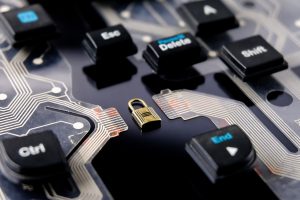How can you tell if a cellular IoT provider is the right fit for your use case? With so many options out there today, it’s understandable that deciding on one can be a daunting task.
Here is a guideline of 5 things to look for to identify a connectivity partner that will not only create customized solutions for your current use case, but keep up with your deployment’s evolving needs.
For more exclusive insights on cellular connectivity and use cases, sign up for our monthly newsletter today

Flexible Data and price plans
When it comes to data plans and IoT, flexibility is critical. Different industries and use cases require distinct IoT connectivity plans based on how much data is needed.
A cold chain monitoring tracker will need to send and receive larger amounts of data more frequently, while a glucose monitoring device might require additional data security measures. Because of this variability, a “one-size-fit-all” plan is often impractical when your needs are constantly changing.
Moreover, your IoT connectivity provider must be able to accommodate legacy devices and help you transition with the sunsetting of 2G and 3G in certain countries like Germany. These transitions should also be done with minimal service disruption and without locking you into a particular technology roadmap.
IoT providers who own and operate their core network can deliver customized offerings and billing schemes. This includes features like different data packages (e.g., fixed, aggregated, pooled) for different usage profiles.

Security infrastructure
If not already, security is at the forefront of every IoT enterprise and user. You need a provider that has an end-to-end encryption solution that will not only safeguard data but combat malicious attacks on networks.
IoT deployments pose unique challenges with regards to data management and privacy but also face regulatory hurdles. For example, the Product Security and Telecommunications Infrastructure (PSTI) Bill will come into force on April 29, 2024. IoT device manufacturers and distributers will be forced to comply with the Bill to be allowed to sell in the UK market.
Cybersecurity threats don’t stop, and malicious actors are only becoming more sophisticated, so your IoT security can’t rest on its laurels. Look for a partner that offers reliable 24/7 monitoring backed by network operations center (NOC) support.

Global seamless coverage
With any kind of IoT device, robust and reliable connectivity is paramount. Especially when a device requires constant connectivity such as a glucose monitor. The advantage of cellular connectivity is that its stability has been tried and tested for over three decades. It also covers hard to reach areas where traditional forms of connectivity are unfeasible (e.g., Wi-Fi) such as wind or solar farms.
Even with cellular, you should also consider which networks your connectivity provider has access to. With heavy network traffic such as in urban areas (e.g., smart cities), your IoT devices could go offline. A provider with broader access to Tier 1 network operators will have fewer latency and dropped transmissions.
Easy device management
As IoT suites become more complex, administering and management device deployments is increasingly time-consuming and costly. You should be looking for a connectivity partner that can furnish you with all the tools as intuitively as possible.
Some features and capabilities might include Over the Air (OTA) remote provisioning and configuration for any software or security updates. Centralized monitoring and troubleshooting can help you resolve issues faster, while alerts can automate actions based on predetermined parameters.
In turn, this can reduce costs and expenditures by minimizing truck rolls and reduce errors by reducing manual processes.

Support from IoT experts
Any service interruption or disruption of data transmission can have serious repercussions on your business. Available support can provide you with the needed peace of mind to call from any location if an issue occurs. Operators that offer 24/7 support from Network Operations Centers (NOC) and tech support hubs across time zones and geographies.
If you’d like to learn more about our award winning solutions and our ecosystem of innovative connectivity providers, schedule a one-one-one meeting with us today. Otherwise, read more about our partnerships by clicking on the links above, or why wait? Try our SIMs today.











